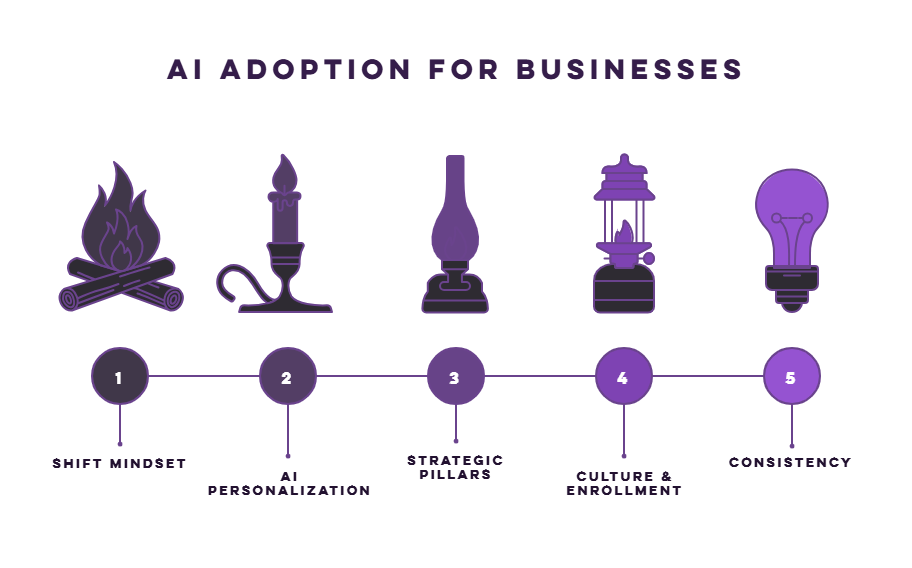AI Adoption Strategy: A Three-Part Guide for Business Leaders
- Synergy Team

- Oct 13
- 2 min read

Artificial Intelligence isn’t just another technology trend — it’s reshaping how organizations create value, build trust, and compete. But successful adoption doesn’t happen by accident. It requires clarity of purpose, cultural buy-in, and practical execution.
That’s why we’ve put together this three-part AI Adoption Strategy blog series: to help leaders move from high-level strategy to lasting transformation.
Part 1: Why AI Adoption Is a Race to the Top — Not the Bottom

In the first article, we challenged the default instinct to use AI only for speed and cost-cutting. That’s the “race to the bottom,” and even if you win, you lose. Instead, AI offers a “race to the top”: a chance to create value, deepen trust, and deliver work worth sharing.
Key themes include:
Why attention is scarce and how AI reshapes visibility.
The power of the “smallest viable audience” paired with AI personalization.
Four pillars of AI adoption strategy: systems, empathy, games, and time.
Why culture and consistency are as critical as tools.
Part 2: Building a Culture of AI Enrollment

Strategy is only half the story. In the second article, we explored why culture determines AI success. Technology alone won’t transform an organization — people must choose to join the journey. That shift from compliance to enrollment is what makes adoption durable.
Key takeaways:
Enrollment creates advocates; compliance breeds resistance.
Culture is simply “people like us do things like this” — and leaders must align AI with that identity.
Practical ways to foster enrollment: pilot teams, sandboxes, storytelling, leadership modeling, and recognition.
Case examples of resistance vs. embrace to illustrate the difference.
Part 3: From Strategy to Execution — Making AI Work for Your Business

The final article turns philosophy into practice. Leaders don’t just need the “why” and “how” of AI — they need execution that works today and builds for tomorrow.
Highlights include:
Applying the four pillars (systems, empathy, games, time) in real-world settings.
Pitfalls to avoid, from efficiency-only mindsets to one-off projects.
A step-by-step framework for leaders to define vision, build champions, measure adoption, and adapt over time.
Practical tools: discovery workshops, intranet integration, helpdesk automation, predictive analytics, and training programs.
Bringing It All Together
The race to the top with AI isn’t about technology alone — it’s about strategy, culture, and execution working together. Leaders who embrace this integrated approach will build organizations that aren’t just efficient, but resilient, innovative, and future-ready.
At Synergy, we help businesses move through each of these phases — from defining strategy, to shaping culture, to making execution real. If you’re ready to explore how AI can become a lasting advantage in your organization, let’s connect.





Comments